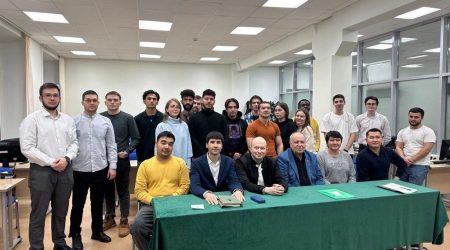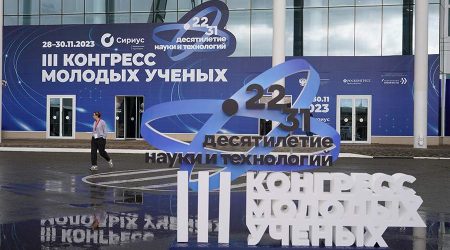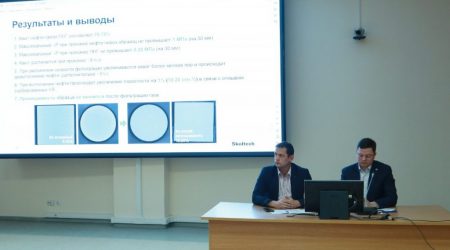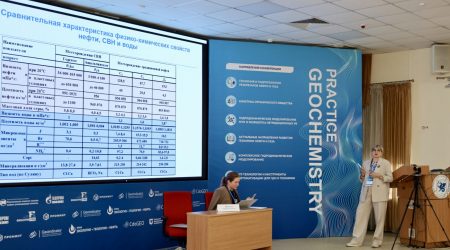Development of Gas Condensate Deposits session held at KFU
Representatives of Russian oil and gas companies, universities, research institutes, and scientific centers discussed issues related to improving the efficiency of developing such deposits.
The event was headed by Vice-Rector for Earth Sciences Danis Nurgaliev and moderated by Deputy Director for Marketing at the Gazprom Neft-KFU Center Vladislav Sudakov, and Head of the Product Development Program at Gazprom Neft’s scientific division Pavel Kudrin.
Representatives of the Institute of Geology and Petroleum Technologies of KFU (IGPT), the Institute of Oil and Gas Problems at the Russian Academy of Sciences, the Tyumen Oil Research Center, as well as Gazprom Neft, Gazprom VNIIGAZ, ITPS (Information Technology Professional Solutions), Sakhalin Energy, and other organizations took part in the discussion.
According to Mr Kudrin, Kazan and Kazan University were not chosen by chance to host the session – the IGPT has a group of scientists who have made interesting discoveries in this field.
“For many oil companies, the development of fields with a gas component is now a priority, because the era of easy reserves is over, and the portfolios of organizations are dominated by complex reserves, such as thin oil rims or low-permeability gas condensate formations,” said Kudrin to the media. “It is very important to work together to increase the efficiency of their development. To do this, we must communicate openly with our colleagues in the industry, as well as with contractors who create digital products and provide services. It is necessary to meet annually at the session, talk about what we have managed to do over the year, about our achievements and problems.”
Dr Sudakov noted that compared to last year, when this session was held at KFU for the first time, the geography of participants has expanded significantly and now covers almost all of Russia, from Sakhalin to St. Petersburg.
“There are sufficient gas condensate deposits in Russia, but only recently have they begun to be actively exploited in our country. For example, we are constantly cooperating in this area with Gazprom Neft. Together with them, we are developing various technologies for gas condensate production. The first day of the session was devoted to joint projects with this company, which we discussed one-on-one,” explained Sudakov. ”On the second day, we were joined by representatives of other Russian organizations, universities, and scientific institutions. The range of topics expanded. We shared our knowledge and learned from the experience of our colleagues and partners.”
He noted that KFU has developed methods for developing gas condensate fields and their oil rims, as well as projects aimed at combating various complications that arise during development, including “condensate banks.”
Marat Mannapov, head of the forward planning department for field development at the Tatneft-Dobycha structural division of Tatneft, said that the development of the above-mentioned type of deposits is relevant for his company, “The topic indicated in the title of the session is of interest to our company, as there is a promising resource base for increasing production. We try to keep abreast of what is being done in this area. Topics related to increasing the rate of reserve extraction and modern approaches to managing well operation modes are particularly important to us. Alexander Shandrygin’s presentation today provided a deeper understanding of the processes taking place in the reservoir.”
The report presented by Alexander Shandrygin, Chief Researcher at Gazprom VNIIGAZ, was entitled “On the determination of the saturation of relict (scattered) oil in oil and gas condensate deposits.”
“The presence of relict or, as it is also called, tied-up (residual) oil in gas-saturated reservoirs of oil and gas condensate and gas-oil fields has a significant impact on the calculation of reserves and the development of such deposits,” commented the presenter. “That is why we, together with experts from KFU, have begun to develop a methodology that allows us to estimate the quantity and composition of relict oil.”
Shandrygin believes that exchanging experience with colleagues is necessary in order to understand the possible directions for the development of gas condensate fields and the research and technologies that are needed.







